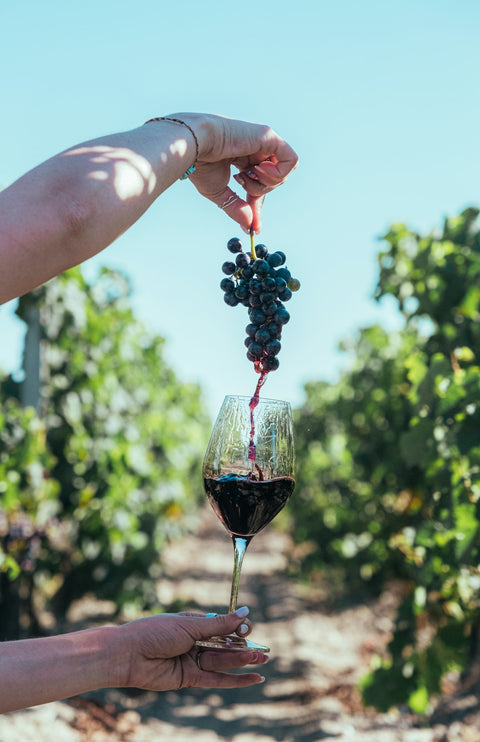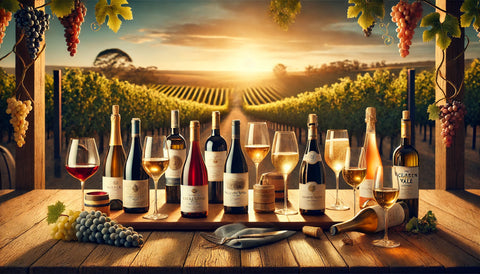French oak barrels are often considered the gold standard in winemaking, especially when it comes to crafting premium white wines. The subtlety and complexity they lend to the flavour profile of the wine have captivated winemakers and wine lovers alike for centuries. But how exactly does French oak influence the taste of white wine? Let’s uncork the details!
When wine is aged in French oak barrels, the wood interacts with the liquid in a way that transforms its character. The porous nature of oak allows a small amount of oxygen to enter the barrel, softening the wine’s tannins and enhancing its texture. French oak, specifically, is known for its tight grain and less aggressive flavours compared to American oak, making it ideal for white wines that require finesse and balance.
The compounds within French oak, like lignins, lactones, and tannins, impart unique characteristics to the wine. Vanilla, toasted almond, and even subtle spicy notes like clove can emerge during the aging process. This is particularly true for varietals like Chardonnay, where the creamy, buttery notes often associated with this wine are partly a result of oak aging. The level of toast on the barrel—light, medium, or heavy—also plays a significant role in shaping the wine’s flavour. For example, lightly toasted barrels add delicate, nutty nuances, while medium toast enhances caramel and spice notes.
Key Features of French Oak in Winemaking
- Tight Grain: Ensures a slower release of oak flavours and a more delicate impact on the wine.
- Subtle Flavours: Adds refined notes like vanilla, nuts, and spice without overwhelming the wine.
- Oxidation Control: Promotes micro-oxygenation, which softens acidity and enhances texture.
- Versatility: Pairs beautifully with varietals such as Chardonnay, Sauvignon Blanc, and Viognier.
- Customisation: Toast levels can be adjusted to achieve specific flavour profiles.
Proper Handling of French Oak Barrels
Using French oak to its full potential requires careful handling. First, selecting high-quality barrels is crucial. Winemakers should source barrels from reputable coopers who use wood from sustainably managed French forests. Proper preparation is also vital—rinsing new barrels before use removes excess tannins that might otherwise overpower the wine.
Once the wine is aging in the barrels, regular monitoring is essential. Temperature and humidity should be carefully controlled in the cellar to ensure optimal interaction between the wine and the wood. Over-aging can lead to an overly oaky wine, which might mask the delicate characteristics of the varietal. Striking the right balance is key.
Selecting the Right Materials
Choosing the right French oak barrel depends on the type of wine you’re producing. For premium white wines, lighter toast levels are often preferred to highlight the fruitiness and minerality of the wine. Additionally, barrels made from oak harvested from specific French forests, like Allier or Vosges, are prized for their ability to deliver fine-grained, elegant flavours.
It’s also worth considering alternatives such as oak staves or chips for those seeking oak influence without the expense of barrels. While these don’t provide the same level of integration as barrels, they can still impart pleasant oak characteristics, particularly for smaller-scale winemaking.
FAQs
1. What makes French oak different from American oak?
French oak has a tighter grain, which means its flavours are released more slowly, resulting in a more subtle and elegant influence on the wine. American oak tends to impart stronger, sweeter notes like coconut and vanilla, which can be overpowering for some white wines.
2. How long should white wine be aged in French oak barrels?
The aging period varies depending on the varietal and desired flavour profile, but typically, white wines are aged for 6 to 12 months. Winemakers closely monitor the process to avoid over-oaking.
3. Are French oak barrels sustainable?
Yes, many French oak barrels are sourced from sustainably managed forests. Winemakers and cooperages often prioritise environmental stewardship, ensuring the longevity of these precious resources.
4. Can I achieve oak flavours without using barrels?
Yes, oak staves, chips, and even oak spirals can be used as cost-effective alternatives. While these methods don’t replicate the full complexity of barrel aging, they can still enhance a wine’s flavour profile.
French oak’s ability to elevate white wine lies in its unique combination of subtlety, elegance, and versatility. Whether you’re sipping on a creamy Chardonnay or a crisp Sauvignon Blanc, the nuanced touch of French oak brings out the best in the wine, creating a sensory experience that’s hard to forget.




Comments (0)
There are no comments for this article. Be the first one to leave a message!